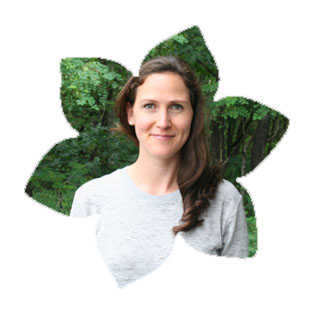Overcoming Obstacles
Community Forests need a level playing field to thrive
Like the little engine that could, the growing community forest movement in BC is succeeding despite formidable obstacles.
This summer, after many years of hard work by dozens of committed community activists, both Harrop-Procter and Likely-Xats’ull were offered long-term community forestry agreements. Robin Hood, manager of the Likely-Xats’ull Community Forest and president of the BC Community Forest Association (see our September newsletter) was pleased with the new licence, proclaiming “our town is alive again.”
Replacing the five-year pilots with new 25-year agreements will provide stability for communities like Likely and Harrop-Procter. The agreement will help them implement plans to create jobs, build wealth and sustain their forests.
The new, longer-term agreements are great news, but community forests still face formidable obstacles.
Government’s forest policies continue to hobble community forests. BC’s forestry laws and policies are skewed to favour high-volume, low-value industrial logging over community-friendly and environmentally focused initiatives. Recent changes to forestry laws have exacerbated this distortion, promoting more control of public forests by fewer companies, and massive salvage logging,
Community forests do not own their own mills. They are “market loggers” selling wood to mills and artisans. But without a competitive log market in BC, most community forests are forced to sell to the nearest large mill. The consolidation in the industry facilitated by Liberal policies has worsened this problem-Western Forest Products controls nearly half the logs on public forest lands; Canfor now controls almost 12% of the cut. New incentives promoting mega mills have made community forests the captives of a few customers-the major companies. The problem is worse in the Interior, where prices are further distorted by the large surplus of timber attacked or killed by beetles.
Despite these entrenched obstacles, the movement for local control of forests continues to grow. Hundreds of communities have expressed interest in community forests. Over the summer the BC government announced that Powell River, Wells Gray and Prince George will be the latest of 24 communities to be offered longer-term community forest licences.
Likely-Xats’ull and Harrop-Proctor are modelling new approaches to community-friendly forestry. Unlike the big logging corporations that pursue profits at virtually any cost, community forests are grassroots community economic development organizations. They create more local jobs and promote forestry that is seeking to be culturally, ecologically, and economically sustainable. Operating under a hostile regulatory regime, they seek to create the greatest socio-economic benefit possible for their communities, while maintaining a vibrant forest over the long term.
While they have similar licences, the focus of each community forests differs:
- The Harrop-Procter Community Forest-BC’s only community forest with ecosystem-based plans in place-covers about 10,900 hectares between the Purcell and Selkirk Mountains east of Nelson. The Harrop-Procter Co-op works with local sawmill owners and remanufacturing businesses to produce rough-cut lumber and home finishing materials, which support local manufacturing jobs.
- The Likely-Xats’ull Community Forest is a joint project of the Soda Creek Indian Band and the community of Likely. Together they manage 12,000 hectares of public forest in the Cariboo between Williams Lake and Quesnel, 70 km east of Highway 97. The project has an allowable annual cut of 15,000 cubic metres and uses the revenue to build a tourism infrastructure focused on the area’s history and surrounding wilderness.
- The tenure of the Powell River Community Forest is used to enhance recreation and tourism resources while providing wood for local furniture, flooring, cabinet, and specialty-cut lumber manufacturers.
- In Prince George, the community forest will concentrate on logging up to 12,000 cubic metres of beetle-killed trees from 4,000 hectares of public forest land within municipal boundaries to provide a buffer against fire.
The BC Community Forest Association (BCCFA) has also been active over the past few months promoting the interests of communities that are either managing or striving to establish community forests. Building on their success in getting an 85% stumpage reduction, BCCFA representatives recently met with academics and government staff to address key issues facing community forests: mountain pine beetle, tenure, governance, and valuation of the benefits of community forest management.
The efforts of the hundreds of BC community forests activists are beginning to pay off, but many further reforms are needed to level the playing field and allow community forests to thrive. They need your support.
